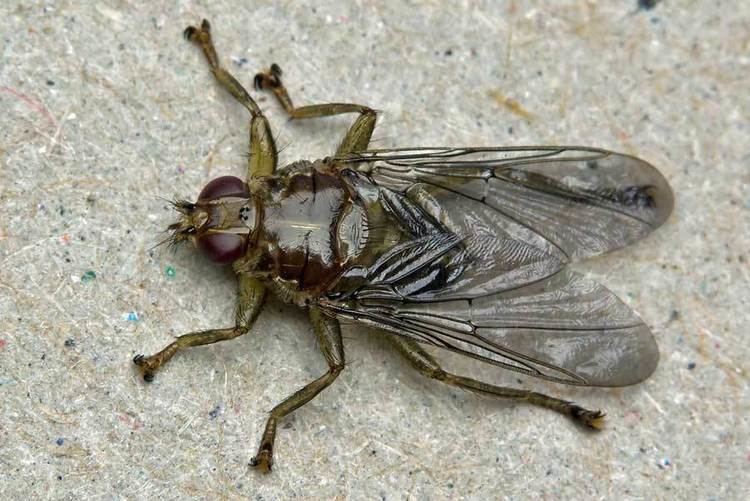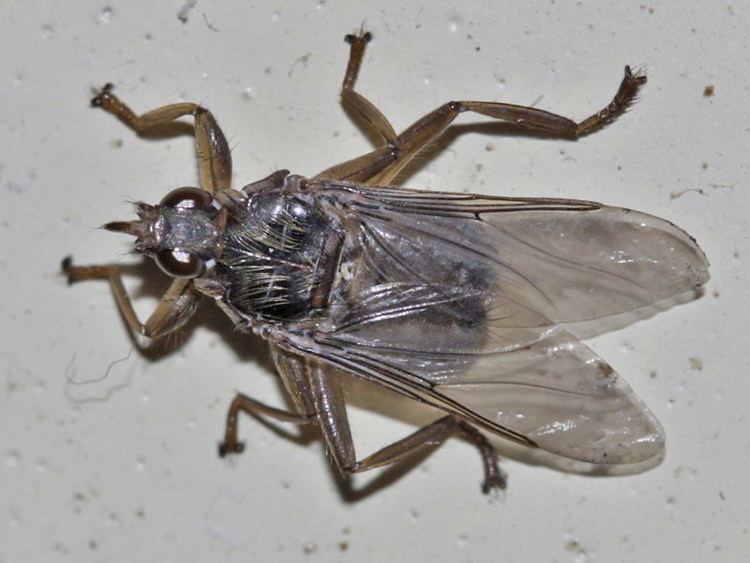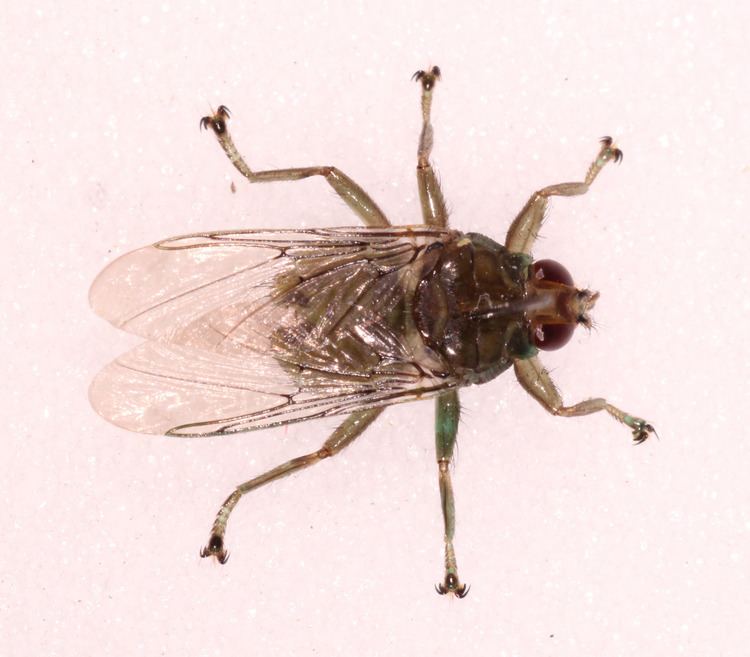Scientific name Hippoboscidae Order Fly | ||
 | ||
Lower classifications Lipoptena cerviSimilar Lipoptena cervi , Hippobosca equina , Ornithomya | ||
Hippoboscidae, the louse flies or keds are obligate parasites of mammals and birds. In this family there are winged species which can fly at least reasonably well, as well as others with vestigial or no wings which are flightless and highly apomorphic. As usual in their superfamily Hippoboscoidea, most of the larval development takes place within the mother's body, and pupation occurs almost immediately.
Contents

The sheep ked, Melophagus ovinus, is a wingless, reddish-brown fly that parasitizes sheep. The Neotropical deer ked, Lipoptena mazamae, is a common ectoparasite of white-tailed deer (Odocoileus virginianus) in the southeastern United States. Both winged and wingless forms may be seen. A common winged species is Hippobosca equina, called "the louse fly" among riders. Species in other genera are found on birds, for example, Ornithomya bequaerti has been collected from birds in Alaska. Two species of Hippoboscidae – Ornithoica (Ornithoica) podargi and Ornithomya fuscipennis are also common parasites of the tawny frogmouth (Podargus strigoides) of Australia.

Pseudolynchia canariensis is commonly found on pigeons and doves, and can serve as the vector of pigeon malaria. There is some evidence that other Hippoboscidae can serve as vectors of disease agents to mammals.

Pseudolynchia canariensis (Hippoboscidae) Pigeon louse fly
Systematics

In certain outdated classification systems, the term "Hippoboscidae" was used to refer to what is accurately designated as Pupipara, encompassing not only the current family but also bat flies, which include the families Nycteribiidae and Streblidae. Subsequent research has demonstrated that two out of the three traditionally recognized subfamilies within Hippoboscidae, namely Hippoboscinae and Lipopteninae, are, for the most part, monophyletic, indicating that they form a natural group based on common ancestry. According to cladistic analysis of several DNA sequences, to make the Ornithomyinae monophyletic their tribe Olfersini deserves to be recognized as a full-blown family too.

